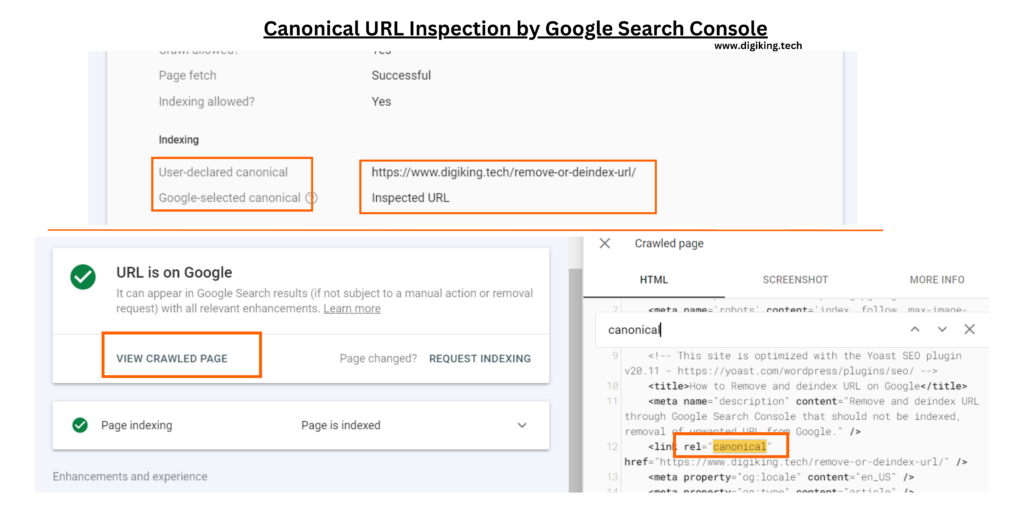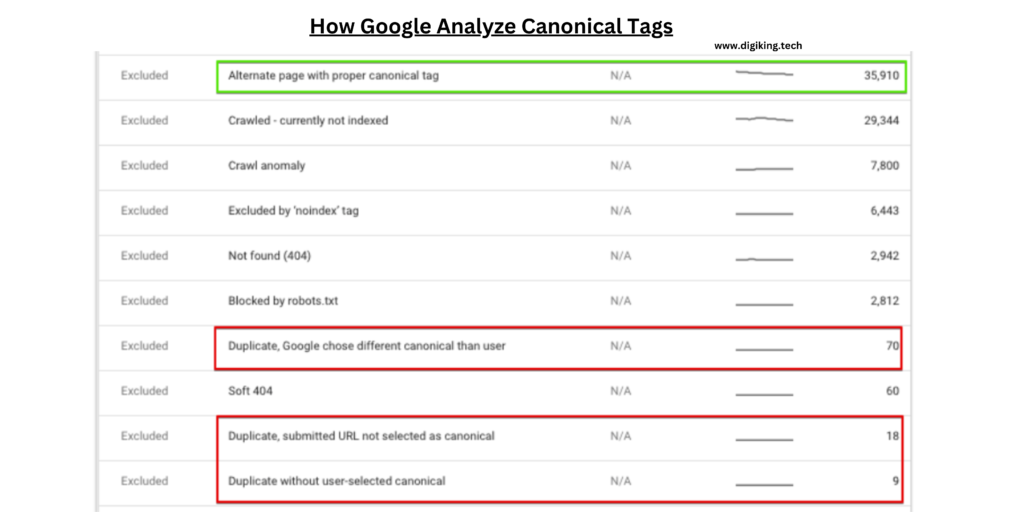URLs are an important subject to understand in search engine optimization. They are used on websites to handle duplicate content concerns and to give search engines a clear reference to the preferred version of a web page. When numerous URLs point to the same piece of information, search engines may become confused as to which page to rank, potentially resulting in diluted search rankings.
Canonical URLs, often known as “canonicals,” are an important topic in current SEO. Canonical URLs, at their core, are a method of informing search engines about the preferred version of a webpage when many copies of the same content exist. These variations might be caused by minor variances in URL structures, parameter tracking, or other similar events.
When search engines find duplicate material across numerous URLs, they are confronted with a quandary. Choosing which version to rank might result in poor search results, user confusion, and significant penalties for duplicate material. Canonical URLs solve this issue by defining a page’s principal version, indicating that all other versions are duplicates and should be handled as such.
Example:
Canonical tags, also known as canonical links or rel=”canonical” tags, provide you the ability to affect canonicalization.
When determining canonical URLs, Google analyses your supplied rel=”canonical” tags (but does not totally rely on them).
A canonical tag looks like this in the head> section of a webpage’s HTML source code:
<link rel="canonical" href="https://example.com/preferred-url-here/" />
HTML elements that assist search engines in determining which version of a web page is preferred when numerous versions of the same material exist. They serve as a signal to search engines, informing them that a particular page is the primary source and should be viewed as the original material.
Canonical tags are used to combine duplicate or similar material from several URLs into a single, authoritative version. This consolidation stops search engines from indexing and ranking several copies of the same information, eliminating difficulties with content duplication and potential SEO penalties.
Duplicate content is frowned upon by search engines, particularly Google, because it can result in a poor user experience and confusion in search results. Canonical tags help to avoid such penalties by indicating the primary page that should be indexed and prioritized. As a result, your favorite material gets the most exposure, while the other versions are consolidated and do not compete.
Inbound links are an important SEO component that helps to the authority and ranking potential of a website. When the same content appears on many URLs, inbound links are dispersed over these sites, weakening their SEO value. By using canonical tags, you may concentrate link juice on a single page, increasing its SEO value and authority.
Search engine bots crawl websites to index their content and understand their structure. When there are many versions of the same material, bots must crawl each one, which wastes crawl money and slows down the indexing process. Canonical tags speed up crawling by directing bots to the preferred version, increasing crawl efficiency.
Canonical tags indirectly enhance the user experience by directing people to the main version of a website. Users will not be sent to different URLs with the same information, minimizing confusion and improving navigation. A pleasant user experience leads to longer session lengths.
Now that we’ve established the importance of canonical tags, let’s look at how to use them correctly:
<link rel="canonical" href="https://example.com/preferred-url-here/" />

<reference name="head">
<action method="addLinkRel">
<rel>canonical</rel>
<href>https://example.com/preferred-url-here/</href>
</action>
</reference>
We advise search engines about the preferable version of the information that should be displayed in search results by supplying the canonical URL, so avoiding any duplicate content penalties:
One of the most frequent and successful methods of specifying a canonical URL is to use the HTML link element with the attribute “rel=canonical.” We may use this feature to specify the preferred URL for a certain piece of content. Search engines, such as Google, recognize this property and prioritize the canonical URL supplied in their indexing process.
<head>
<link rel="canonical" href="https://www.yourwebsite.com/article"/>
</head>
In addition to utilizing the HTML link element, the HTTP header may be used to define the canonical URL. We inform search engines about the primary version of the material by providing a canonical URL header response when displaying a page. This strategy is very handy when working with dynamic websites and content management systems that create pages with several URLs.
HTTP/1.1 200 OK
Link: <https://www.yourwebsite.com/article> rel="canonical"
XML sitemaps are crucial tools for assisting search engines in discovering and indexing material on a website. To strengthen the canonical signal, we might add the preferred URL to the XML sitemap. This strategy assures that search engine crawlers meet the canonical URL when they examine your sitemap.
<url>
<loc>https://www.yourwebsite.com/article</loc>
<canonical>https://www.yourwebsite.com/article</canonical>
</url>
We may provide the canonical URL for specific pages directly using Google Search Console. Website owners may use this tool to control how their content appears in Google search results. We may set the canonical URL using the “URL Inspection” tool to improve the exposure and ranking of our content.

When working with information that has different versions or URLs, redirects are crucial. Implementing a 301 redirect from duplicate URLs to the canonical version consolidates link equity while also directing users and search engines to the preferable URL. This not only enhances the user experience but also aids in SEO rankings.
Redirect 301 /duplicate-article https://www.yourwebsite.com/article
Internal linking arrangements can have a substantial influence on canonicalization and overall SEO. We communicate to search engines that this is the primary material to be indexed and ranked by internally linking to the recommended version of an article. Internal linking done correctly may increase the authority and exposure of your canonical URLs.
Incorporating social media identifiers like Open Graph and Twitter Cards can have an indirect impact on canonicalization. When we post material on numerous social sites, we may choose how it appears, including the canonical URL. We strengthen the authority and prominence of the canonical version by ensuring that the shared links lead to it.
URL parameters are sometimes used by websites to produce dynamic versions of content. Setting canonical tags for the preferred version and properly managing URL parameters helps search engines comprehend the original material and avoid any duplicate content concerns.
Understanding how to use canonical tags correctly is critical for ranking better on search engine result pages (SERPs) and increasing organic traffic. So, let’s get started and discover the major blunders to avoid while using canonical tags:
Canonical URLs are extremely important when it comes to optimizing your website for search engines. You may combine ranking signals, eliminate duplicate content penalties, and improve your website’s overall SEO performance by selecting the preferred version of a web page. Implementing canonical URLs correctly and avoiding common errors will dramatically improve your search engine results and user experience.